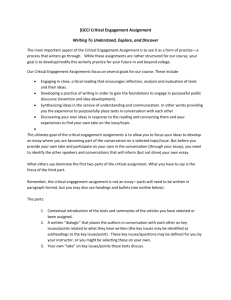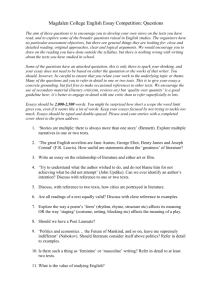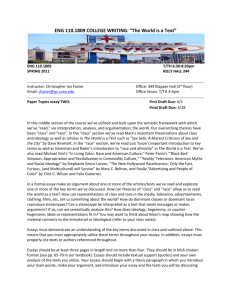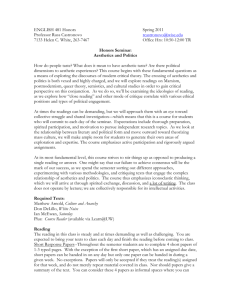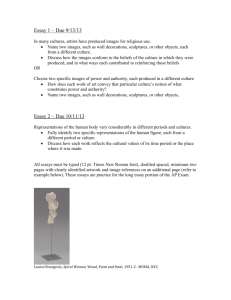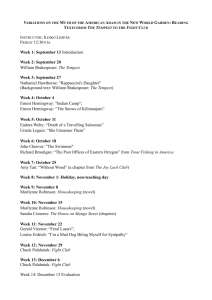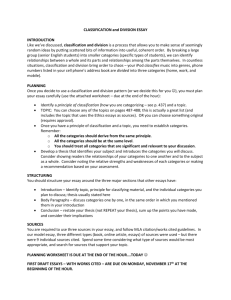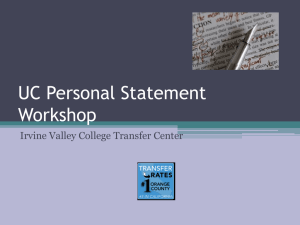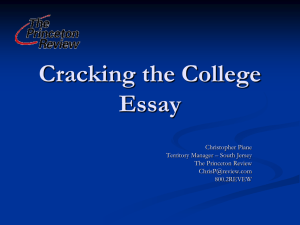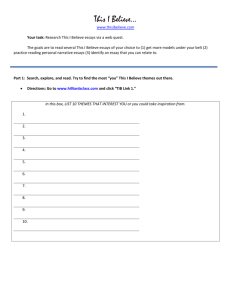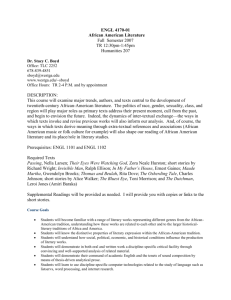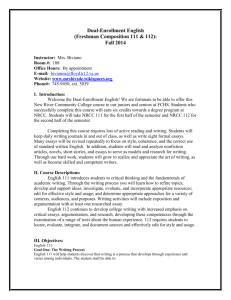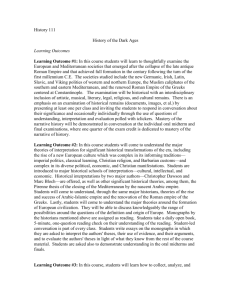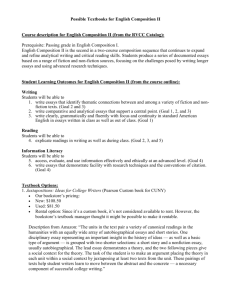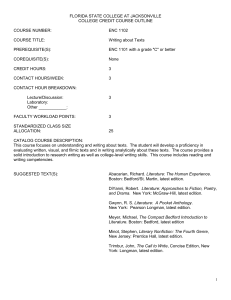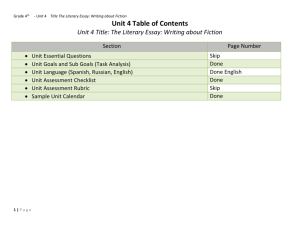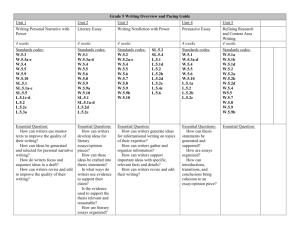Handout-Paper2PlanningWorksheetYoder
advertisement
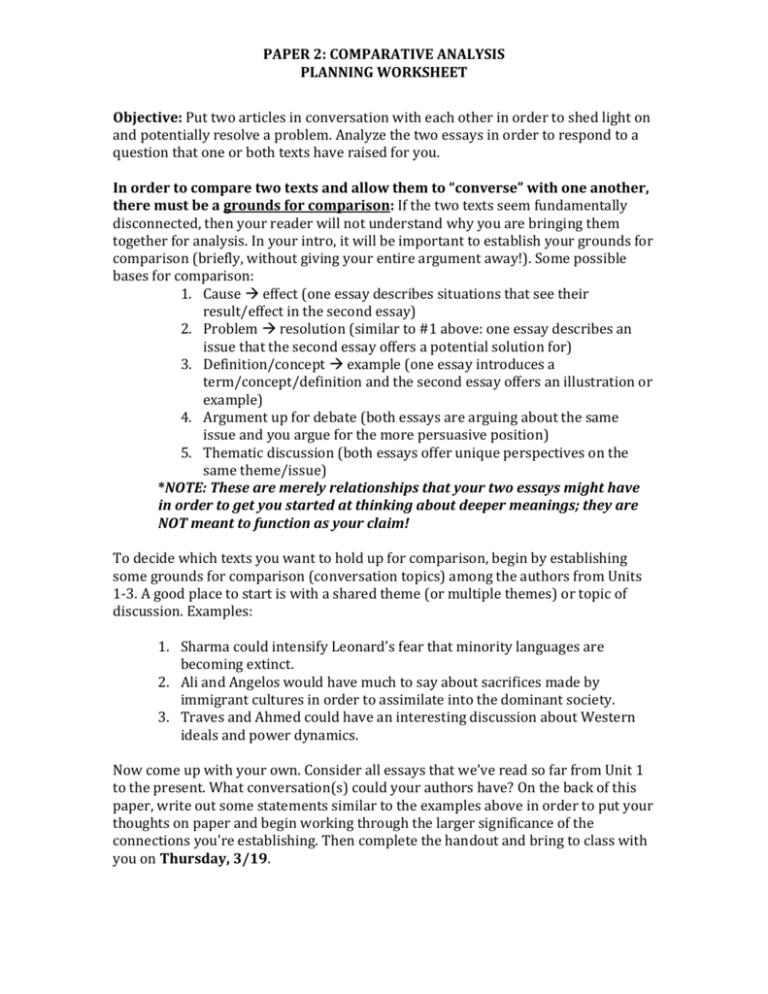
PAPER 2: COMPARATIVE ANALYSIS PLANNING WORKSHEET Objective: Put two articles in conversation with each other in order to shed light on and potentially resolve a problem. Analyze the two essays in order to respond to a question that one or both texts have raised for you. In order to compare two texts and allow them to “converse” with one another, there must be a grounds for comparison: If the two texts seem fundamentally disconnected, then your reader will not understand why you are bringing them together for analysis. In your intro, it will be important to establish your grounds for comparison (briefly, without giving your entire argument away!). Some possible bases for comparison: 1. Cause effect (one essay describes situations that see their result/effect in the second essay) 2. Problem resolution (similar to #1 above: one essay describes an issue that the second essay offers a potential solution for) 3. Definition/concept example (one essay introduces a term/concept/definition and the second essay offers an illustration or example) 4. Argument up for debate (both essays are arguing about the same issue and you argue for the more persuasive position) 5. Thematic discussion (both essays offer unique perspectives on the same theme/issue) *NOTE: These are merely relationships that your two essays might have in order to get you started at thinking about deeper meanings; they are NOT meant to function as your claim! To decide which texts you want to hold up for comparison, begin by establishing some grounds for comparison (conversation topics) among the authors from Units 1-3. A good place to start is with a shared theme (or multiple themes) or topic of discussion. Examples: 1. Sharma could intensify Leonard’s fear that minority languages are becoming extinct. 2. Ali and Angelos would have much to say about sacrifices made by immigrant cultures in order to assimilate into the dominant society. 3. Traves and Ahmed could have an interesting discussion about Western ideals and power dynamics. Now come up with your own. Consider all essays that we’ve read so far from Unit 1 to the present. What conversation(s) could your authors have? On the back of this paper, write out some statements similar to the examples above in order to put your thoughts on paper and begin working through the larger significance of the connections you’re establishing. Then complete the handout and bring to class with you on Thursday, 3/19. PAPER 2: COMPARATIVE ANALYSIS PLANNING WORKSHEET A. Additional conversations among authors from Units 1-3: 1. 2. 3. B. Now, make a tentative decision on which two authors/essays you wish to explore further for Paper 2: Essay/Author #1: Essay/Author #2: C. Why are you choosing these two texts over any others that may also be able to converse on a similar topic? What is it about these two texts in particular that demands further exploration (be as specific as possible)? D. What conversation are these two authors having? (You can copy one of your statements from letter A above, or create a new one) E. What question do these essays raise, which you plan to respond to in your paper? (What problem or issue do you seek to explore and find a resolution to by analyzing these two texts?) ?



